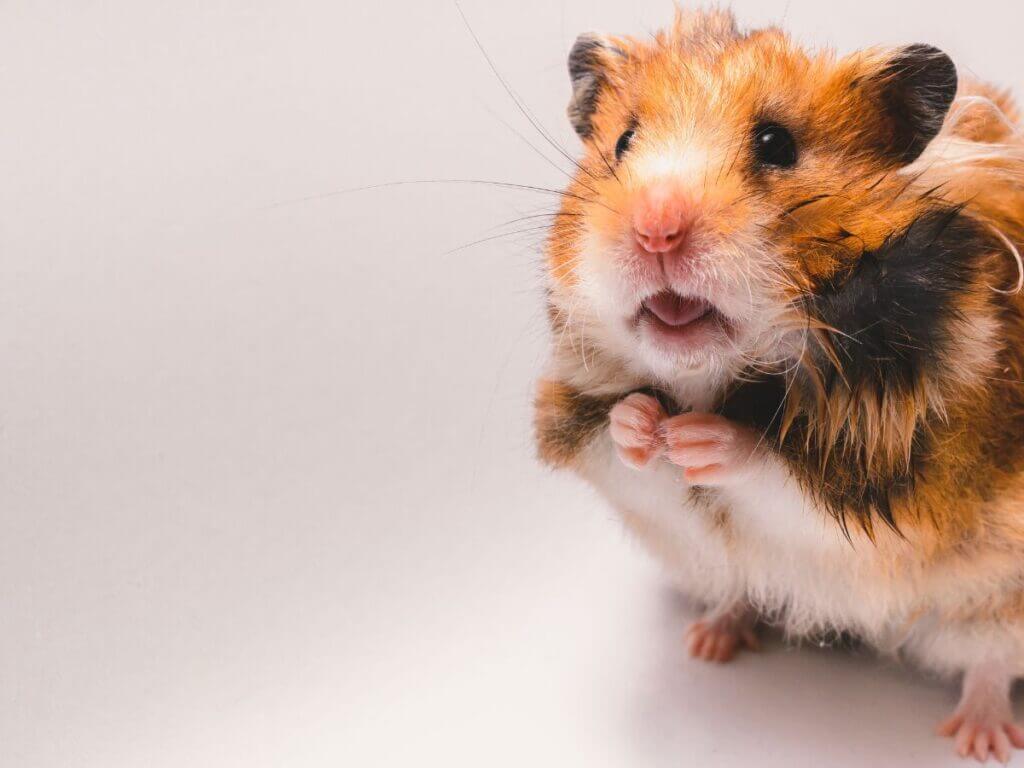
Training your new hamster is not only a fun and rewarding experience, but it also has numerous benefits for both you and your furry friend. By training your hamster, you can strengthen the bond between you and your pet, provide mental stimulation, and improve their overall behavior. Hamsters are intelligent creatures that can learn a variety of commands and tricks, making training an essential part of their care.
When you train your hamster, you are not only teaching them new skills but also building trust and creating a positive relationship. By spending time together during training sessions, you are able to bond with your hamster on a deeper level. This bond can lead to a happier and more fulfilling relationship between you and your pet.
In addition to bonding, training provides mental stimulation for your hamster. Hamsters are curious animals that thrive on mental challenges. By engaging their minds through training exercises, you can prevent boredom and keep them mentally sharp. This can also help prevent behavioral issues that may arise from lack of stimulation.
Furthermore, training can greatly improve your hamster’s behavior. Through positive reinforcement techniques, you can teach your hamster to follow basic commands and perform tricks. This not only makes them more obedient but also helps to establish boundaries and rules within their environment. Overall, training your hamster is a valuable investment of time and effort that will benefit both you and your pet in the long run.
Key Takeaways
- Hamster training is important for bonding and creating a happy, healthy pet
- Understanding your hamster’s behavior is crucial for successful training
- Choose a training method that suits your hamster’s personality and learning style
- Set up a designated training space for your hamster to focus and learn
- Basic commands like sit, stay, and come can be taught, as well as advanced tricks like roll over and spin
- Positive reinforcement techniques, such as rewarding good behavior, are effective in training
- Patience is key to avoiding common training mistakes
- Timid or aggressive hamsters require special training techniques and patience
- Consistency in your hamster’s training routine is important for long-term success
Understanding Your Hamster’s Behavior: Key to Successful Training

Before embarking on a training journey with your hamster, it is important to understand their behavior and how they communicate. Hamsters have their own unique ways of expressing themselves, and being able to interpret their body language is crucial for successful training.
Hamsters communicate through a combination of vocalizations, body postures, and scent marking. For example, if your hamster is feeling threatened or scared, they may make a hissing or squeaking sound. On the other hand, if they are happy and content, they may emit a soft purring noise. By paying attention to these vocalizations, you can gauge your hamster’s emotional state and adjust your training approach accordingly.
In addition to vocalizations, hamsters also use body language to communicate. For example, if your hamster is standing upright on their hind legs with their ears forward, it means they are alert and curious. On the other hand, if they are hunched over with their ears flattened against their head, it means they are feeling threatened or scared. By observing these subtle cues, you can better understand your hamster’s emotions and tailor your training approach to their needs.
Choosing the Right Training Method for Your Hamster
When it comes to training your hamster, there are several different methods you can choose from. The key is to find the method that works best for your hamster’s personality and learning style.
One popular training method is clicker training. This involves using a small handheld device called a clicker to mark desired behaviors. The clicker makes a distinct sound that signals to your hamster that they have done something right. By pairing the clicker sound with a reward, such as a treat or praise, you can reinforce positive behaviors and teach your hamster new commands.
Another training method is shaping, which involves breaking down a desired behavior into small steps and rewarding your hamster for each step towards the final behavior. For example, if you want to teach your hamster to roll over, you would start by rewarding them for lying on their side, then for rolling onto their back, and finally for completing the full roll over. This method requires patience and consistency but can be very effective in teaching complex tricks.
When choosing a training method for your hamster, consider their personality and learning style. Some hamsters may respond better to clicker training, while others may prefer shaping. It may take some trial and error to find the method that works best for your hamster, but with patience and persistence, you can find a training approach that suits their needs.
Setting Up a Training Space for Your Hamster
Creating a safe and comfortable training space is essential for successful hamster training. This space should be free from distractions and provide a positive environment for your hamster to learn and explore.
Start by choosing a quiet area of your home where you can set up a small training station. This can be a table or desk with enough space for your hamster to move around comfortably. Make sure the area is well-lit and free from any potential hazards, such as wires or sharp objects.
Next, gather all the necessary training supplies, such as treats, toys, and a clicker if you are using clicker training. Keep these items within easy reach so that you can quickly reward your hamster for good behavior.
It is also important to minimize distractions in the training space. Turn off any loud noises or distractions that may startle or distract your hamster during training sessions. This will help them stay focused and engaged in the training process.
Lastly, create a positive environment by using positive reinforcement techniques during training. Praise your hamster with a gentle voice and give them plenty of treats and rewards when they perform the desired behavior. This will help create a positive association with the training space and make your hamster more eager to participate in future sessions.
Basic Commands to Teach Your Hamster: Sit, Stay, Come
Teaching your hamster basic commands is a great way to start their training journey. These commands not only provide mental stimulation but also help establish boundaries and rules within their environment.
One basic command you can teach your hamster is “sit.” To teach this command, start by holding a treat above your hamster’s head. As they naturally look up at the treat, their bottom will naturally lower into a sitting position. As soon as their bottom touches the ground, say “sit” and give them the treat as a reward. Repeat this process several times until your hamster associates the word “sit” with the action of sitting down.
Another useful command is “stay.” To teach this command, try to hold your hamster and let your hamster sit in front of you. Hold out your hand in a stop gesture and say “stay.” Take a step back and wait for a few seconds. If your hamster remains in the sitting position, praise them and give them a treat. Gradually increase the duration of the stay and the distance between you and your hamster.
The command “come” is also important for recall training. To teach this command, start by gently put your hamster sitting in front of you. Hold out your hand and say “come.” Encourage your hamster to come towards you by using a treat or a toy as a lure. When they reach you, praise them and give them the reward. Repeat this process several times until your hamster responds reliably to the command.
Advanced Tricks to Teach Your Hamster: Roll Over, Spin, Jump
Once your hamster has mastered the basic commands, you can move on to teaching them more advanced tricks. These tricks not only provide mental stimulation but also showcase your hamster’s intelligence and agility.
One advanced trick you can teach your hamster is “roll over.” To teach this trick, start by having your hamster lie on their side. Hold a treat near their nose and slowly move it in a circular motion towards their back. As they follow the treat with their nose, their body will naturally roll over onto their back. As soon as they complete the roll over, say “roll over” and give them the treat as a reward. Repeat this process several times until your hamster can roll over on command.
Another fun trick is “spin.” To teach this trick, start by having your hamster stand on their hind legs. Hold a treat near their nose and slowly move it in a circular motion. As they follow the treat with their nose, their body will naturally spin in a circle. As soon as they complete the spin, say “spin” and give them the treat as a reward. Repeat this process several times until your hamster can spin on command.
For the trick “jump,” start by having your hamster sit in front of a small obstacle, such as a low hurdle or a rolled-up towel. Hold a treat on the other side of the obstacle and encourage your hamster to jump over it to get the treat. As soon as they successfully jump over the obstacle, say “jump” and give them the treat as a reward. Gradually increase the height of the obstacle as your hamster becomes more confident in their jumping abilities.
Positive Reinforcement Techniques: Rewarding Good Behavior
Positive reinforcement is a key component of successful hamster training. By rewarding good behavior, you can motivate your hamster to repeat desired actions and learn new commands and tricks.
When using positive reinforcement, it is important to choose rewards that are highly motivating for your hamster. This can be small pieces of their favorite treats, such as sunflower seeds or dried fruits. You can also use praise and pet your hamster as rewards, as many hamsters enjoy physical affection from their owners.
Timing is crucial when using positive reinforcement. The reward should be given immediately after your hamster performs the desired behavior, so they can make the connection between the action and the reward. This helps reinforce the behavior and encourages them to repeat it in the future.
In addition to timing, consistency is also important in positive reinforcement training. Make sure to reward your hamster a treats from your hand every time they perform the desired behavior, especially in the early stages of training. This helps reinforce the behavior and makes it more likely to be repeated.
It is also important to gradually reduce the frequency of rewards as your hamster becomes more proficient in their training. Once they have mastered a command or trick, you can start rewarding them intermittently instead of every time. This helps maintain their motivation and prevents them from becoming reliant on treats for performing the behavior.
Avoiding Common Training Mistakes: Patience is Key
When training your hamster, it is important to avoid common mistakes that can hinder their progress and discourage them from learning. One common mistake is expecting too much too soon. Hamsters are small animals with limited attention spans, so it is important to keep training sessions short and focused. Start with simple commands and gradually increase the difficulty as your hamster becomes more proficient.
Another common mistake is using punishment or negative reinforcement during training. Hamsters respond best to positive reinforcement techniques, so it is important to focus on rewarding good behavior rather than punishing bad behavior. Punishment can create fear and anxiety in your hamster, which can hinder their progress and damage the trust between you and your pet.
Lack of patience is another common mistake that hamster owners make during training. Training takes time and consistency, so it is important to be patient and not get discouraged if your hamster does not progress as quickly as you would like. Remember that each hamster learns at their own pace, and with patience and persistence, they will eventually master the desired behaviors.
Training Tips for Timid or Aggressive Hamsters

Training timid or aggressive hamsters can be hard to train or tame, but with the right approach, it is still possible to teach them new commands and tricks.
For timid hamsters, it is important to start with small steps and gradually build their confidence. Begin by rewarding them for simple behaviors, such as approaching your hand or sitting calmly in their cage. As they become more comfortable, you can gradually introduce more complex commands and tricks. It is also important to create a calm and quiet training environment to help them feel safe and secure.
For aggressive hamsters, it is important to prioritize safety and take things slow. Start by working on basic commands, such as sit or stay, from outside the cage. Use a treat or a clicker to reward them for calm and non-aggressive behavior. If your hamster shows signs of aggression, such as biting or lunging, it is important to seek professional help from a veterinarian or an animal behaviorist.
Tailoring your training approach to your hamster’s personality is key when dealing with timid or aggressive behavior. Be patient and understanding, and always prioritize your hamster’s well-being and safety.
Maintaining Consistency in Your Hamster’s Training Routine
Consistency is crucial when it comes to hamster training. By maintaining a consistent training routine, you can reinforce learned behaviors and prevent any regression in their progress.
Start by establishing a regular training schedule that works for both you and your hamster. This can be a few short sessions each day or longer sessions a few times a week. The key is to be consistent and stick to the schedule.
During training sessions, use the same commands and gestures consistently. This helps your hamster understand what is expected of them and makes it easier for them to learn new behaviors. It is also important to use the same rewards consistently, as this helps reinforce positive behaviors.
Tracking your hamster’s progress is also important for maintaining consistency. Keep a training journal where you can record their progress, including the commands they have mastered and any challenges they may be facing. This will help you stay organized and keep track of their achievements. Training your hamster is not only a fun and rewarding experience but also provides numerous benefits for both you and your pet.
By training your hamster, you can strengthen the bond between you, provide mental stimulation, and improve their overall behavior. Understanding your hamster’s behavior and choosing the right training method are key to successful training. Creating a safe and comfortable training space, teaching basic commands, and progressing to more advanced tricks are important steps in the training process.
Positive reinforcement techniques, avoiding common training mistakes, and tailoring your approach to your hamster’s personality are also crucial for successful training. By maintaining consistency in your hamster’s training routine, you can reinforce learned behaviors and track their progress. So why wait? Start training your hamster today and enjoy the benefits of a well-trained and happy pet.
FAQs
What is the best age to start training a hamster?
It is recommended to start training a hamster when they are young, around 4-6 weeks old. This is when they are most receptive to learning and can form a strong bond with their owner.
What are some basic commands to teach a hamster?
Some basic commands to teach a hamster include coming when called, standing on hind legs, and going through a tunnel or hoop. These commands can be taught using positive reinforcement and treats.
What kind of treats should be used for training a hamster?
Hamsters enjoy a variety of treats, including fresh fruits and vegetables, seeds, and small pieces of cooked chicken or egg. It is important to avoid giving them sugary or fatty treats, as these can be harmful to their health.
How long does it take to train a hamster?
Training a hamster can take anywhere from a few days to several weeks, depending on the individual hamster and the complexity of the commands being taught. Consistency and patience are key to successful training.
What are some common mistakes to avoid when training a hamster?
Some common mistakes to avoid when training a hamster include using punishment or negative reinforcement, overfeeding treats, and expecting too much too soon. It is important to remember that hamsters are small animals with limited attention spans, and training should be done in short, frequent sessions.





